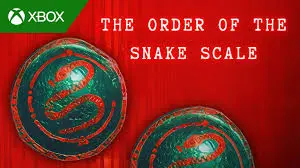Building upon the first title that was released over a year ago, Untold Legends: The Warrior’s Code is a game that you have played before… but that does not mean it is not fun.
[p]
Ever since I was first introduced to the original Diablo many years ago, I have been addicted to hack n’slash dungeon explorers. I have killed more mutant rats and king spiders than anyone really should. But even though my gaming career has had many hours consumed by hacking my way through dungeons while leveling up to learn new spells, finding new weapons to wield, and ransacking pots and barrels to find better armor that houses more protective power but is lighter on my back, I still enjoyed my time with this sequel.
[p]
The player has the option to start the game as one of many types of characters, each with strengths and weaknesses. Taking a step further, the player is given the option to customize the way the playable character looks by changing attributes like hair color and skin tone. And just like every time a level is gained, stats can be boosted one point at time.
[p]
Accidentally, the player has stumbled upon an ancient habitat, inhibited by monks. Here, they have remained in solitude for thousands of years. But since you, the player, has found this long lost civilization, it is up to you to protect it from the monsters that followed you. Along the way, the player will face many types of monsters, and once defeated, the game keeps track of the enemies that you dropped in battle. This allows the player learn more details about the foes they just murdered. This is a feature is rarely, if ever used, but it is a nice addition to the overall presentation value.
[p]
Controlling the character, camera, map, and menus is about as clear as can be on the PSP. Without a second analog stick, the developers got a little crafty with their button layout. Just like the first game, one of the shoulder buttons acts as a shift key for all the other buttons on the PSP, allowing for double the amount of player input. Nothing is ever out of reach of the player. Six spells can be cast thanks to the D-pad and two face buttons, blocking and transforming into a more powerful creature is done by holding “L” and certain face buttons, and “L” in conjunction with Select will change the size of the mini map.
[p]
Thankfully, the designers thought of a better way to travel through the game’s many environments than by bogging down your pack with Recall Potions. Instead, the player simply has to pull up the map in the menu screen, highlight where you want to go, and you are instantly taken there. This teleportation works way better than any Recall Potion, but I just wish the load times were a little shorter. But it guess it is an even trade considering the player will not often see the load screens, which are quite detailed and informative.
[p]
New to this game is the ability to change forms. Like Final Fantasy’s limit breaker system, once enough damage has been taken or dealt out, the absorbed power can be unleashed in a super attack, or in this case, change form. This new form only lasts a short while, but it is enough to get out of a jam, especially when playing single player.
[p]
Sometimes enemies will momentarily stop or drop their weapon. When an action like this happens, an Opportunity Attack can be executed. However, this brief moment of time is fairly limited as the player has to be right on top of the enemy and hold down a button for a couple seconds. By this time, the chance is often missed. While is type of attack is optional, it is almost mandatory for fighting a boss later in the game, which added a slight amount of frustration.
[p]
The biggest and most welcomed addition to this sequel is the online play. Players can now bring a buddy to help tackle the main quest via online WiFi. It is a little disappointing that only two players can fight through the main quest together, but up to four players can battle in online multiplayer death match style. Death match does contain many different variations, including CTF and even last man standing.
[p]
All graphical elements have been bumped up in The Warrior’s Code. In the first title, there was this poor screen refresh rate, causing ghosting whenever the player moved. Thankfully, this problem has been fixed. Plus, the player now has the ability to zoom in and out at will during in game play and in the menu screen. This adds that extra kick in the graphics department that sets it apart from the original game.
[p]
Players will be pleased to know that the game supports spoken dialog. While there aren’t a whole lot of conversations, it is enough to advance the story and bring out that extra touch of detail. All voice acted material is especially noteworthy as well. Even coming out of the tiny PSP speakers, all spoken dialog and orchestra music is pronounced fittingly from the system’s hardware.
[p]
The Warrior’s Code does not really bring anything new to the table. In fact, it is pretty much the exact same type of game that gamers have been playing for years. But for some reason, I had more fun with this game than I thought I would. It is definitely better than its predecessor, The Brotherhood of the Blade, mostly because there was more time to develop a richer, detailed game. The Warrior’s Code is one of the best PSP games for the system. If you don’t mind dungeon hackers, then this game will definitely find a comfortable home in your PSP, even if you like to venture solo or bring a friend. Adding online play is exactly what the series needed and stands as one of the biggest additions to this game. If you own a PSP, you should probably own this game as well.
President & CEO














Leave a Reply